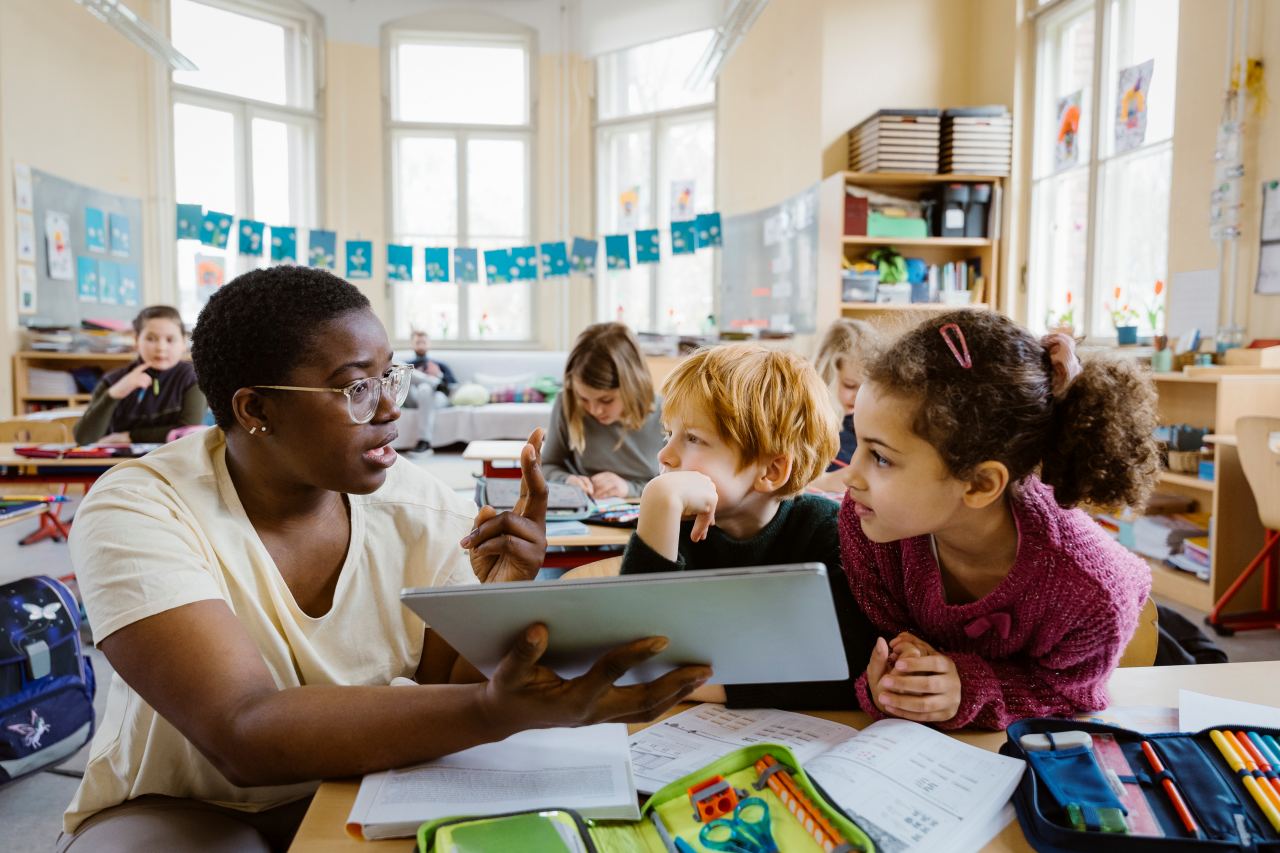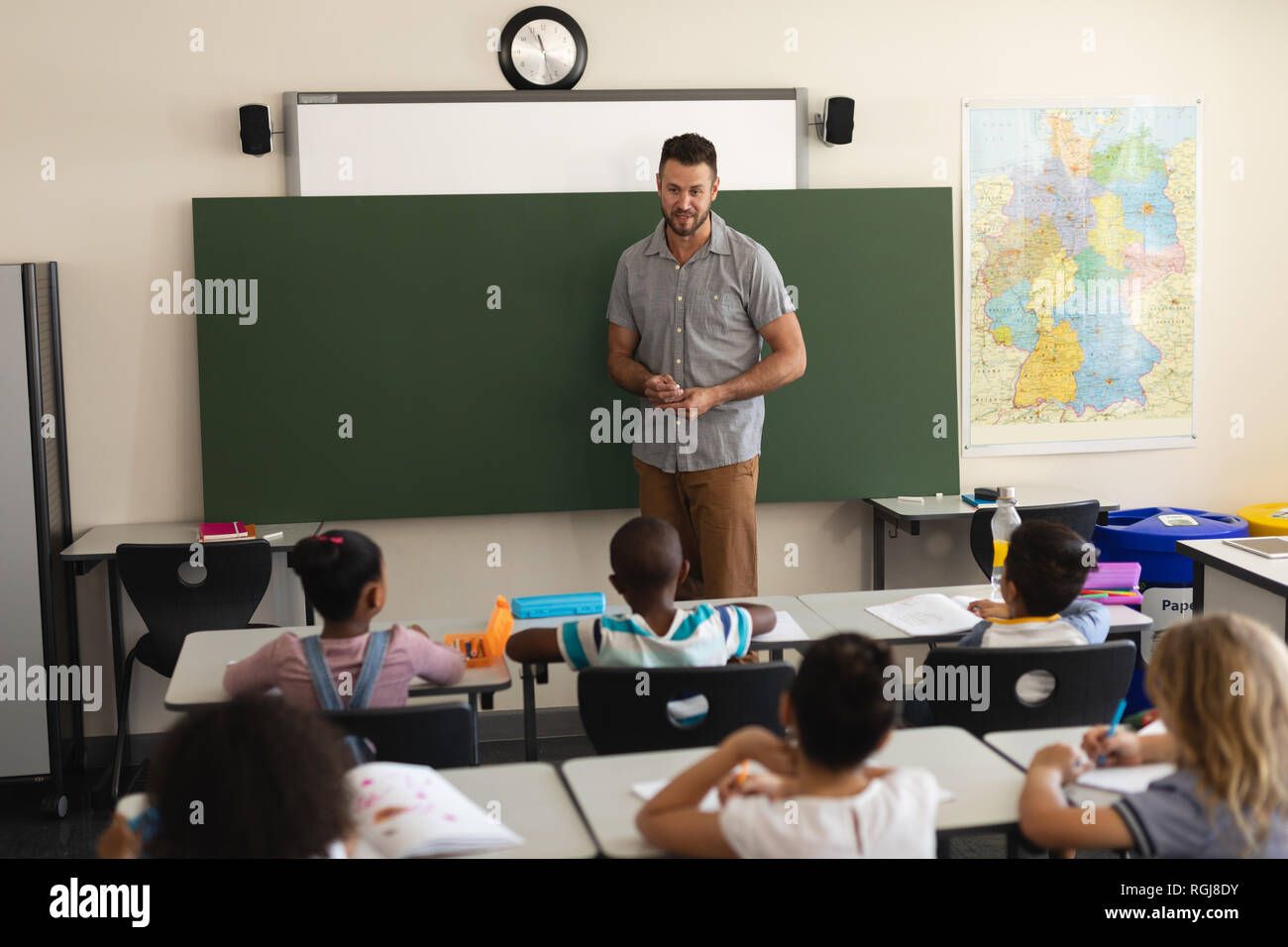Unlock Your Child’s Potential with Primary Science Tuition Singapore
Unlock Your Child’s Potential with Primary Science Tuition Singapore
Blog Article
Exploring the Various Mentor Strategies in Key Scientific Research Education Today
Inquiry-based discovering, hands-on experiments, and the assimilation of modern technology are redefining exactly how educators engage young minds. In addition, joint strategies and distinguished guideline are being employed to cater to the varied needs of trainees, enhancing both interaction and understanding.
Inquiry-Based Understanding
Inquiry-Based Learning (IBL) is a pedagogical technique that encourages pupils to explore clinical concepts with doubting, investigation, and hands-on trial and error. This method stresses the role of trainees as energetic participants in their learning, promoting vital thinking and analytic skills. By involving with real-world inquiries, students become interested and determined, which enhances their understanding of scientific concepts.
In IBL, teachers serve as facilitators, directing trainees as they browse their inquiries as opposed to supplying details directly. This student-centered strategy permits for distinction, fitting numerous finding out designs and speeds. Students establish abilities in developing hypotheses, designing experiments, and evaluating data, which are crucial for clinical proficiency.
Furthermore, IBL fosters cooperation among trainees, urging them to share findings and ideas. This collective questions advertises social skills and a feeling of area within the classroom. Additionally, the procedure of query motivates durability, as trainees learn to embrace failing as a tipping stone toward understanding.
Hands-On Experiments
Hands-on experiments are an important component of effective scientific research education, enhancing the principles of inquiry-based knowing. These experiments permit trainees to involve straight with scientific principles, promoting a much deeper understanding via experiential knowing. By adjusting materials and observing end results, young students can understand abstract theories in tangible methods.
Such activities advertise crucial reasoning and analytic skills, as pupils hypothesize outcomes, conduct experiments, and examine outcomes. This procedure motivates them to ask questions, improve their understanding, and create a scientific state of mind. Hands-on experiments can be customized to diverse knowing designs, ensuring that all students have the opportunity to engage meaningfully with the content.
In addition, hands-on experiments typically urge collaboration amongst peers, advertising synergy and interaction skills. Functioning in teams allows trainees to share concepts, go over searchings for, and gain from each other, which boosts their overall educational experience.
Integrating hands-on experiments right into the main scientific research educational program not only enriches the learning atmosphere but also grows a lifelong rate of interest in science. By actively taking part in their education and learning, trainees are more likely to create an enthusiasm for scientific inquiry that expands past the class.

Modern Technology Assimilation
Incorporating technology right into main scientific research education and learning has actually ended up being increasingly essential in fostering pupil engagement and enhancing discovering results. Using digital tools, such as interactive simulations, digital laboratories, and instructional software program, provides students with chances to explore scientific principles in ingenious ways. These sources help with a much deeper understanding of complicated subjects by allowing students to visualize and manipulate variables that would certainly be not practical in a traditional class setup.
In addition, innovation combination motivates customized discovering experiences. Pupils can advance at their very own rate, reviewing tough concepts with multimedia resources, which satisfy various discovering styles. This flexibility not just sustains private development but likewise cultivates a sense of freedom in students.
Additionally, technology works as a bridge to real-world scientific research, attaching pupils with existing study and professional contributions. Access to clinical journals and on the internet data sources broadens trainees' point of views on clinical inquiry and promotes crucial assuming abilities.
Collaborative Discovering
Collective learning plays a vital function in primary scientific research education by promoting teamwork and interaction abilities among pupils. This strategy urges learners to collaborate, share knowledge, and take part in analytic, which enhances their understanding of clinical ideas. By getting involved in team activities, students discover to articulate their concepts, listen to diverse viewpoints, and work out remedies, all of which are vital skills in both scholastic and real-world contexts.

Research indicates that joint knowing can cause enhanced inspiration and involvement in science subjects, as students discover pleasure in shared experiences (primary science tuition Singapore). In addition, this approach prepares trainees for future collective endeavors, equipping them with the abilities necessary for reliable teamwork in higher education and specialist settings. Eventually, accepting collective knowing in key science education can substantially improve the understanding experience and advertise a much deeper understanding of scientific questions
Differentiated Direction

Set apart instruction can manifest in various methods, such as varying the material, processes, or products of knowing. For instance, teachers might make use of tiered projects that supply differing degrees of complexity, enabling pupils to operate at their corresponding preparedness levels. Furthermore, versatile organizing techniques can help with cooperation among trainees with different go right here capacities, promoting peer understanding.
Evaluation plays an you can look here important duty in this strategy, as it notifies direction and assists instructors recognize each student's distinct needs. Developmental assessments, such as observations and quizzes, can direct instructors in adjusting their techniques to enhance learning end results. primary science tuition Singapore. Ultimately, by carrying out set apart guideline in main science education and learning, teachers can cultivate an extra reliable and fair discovering setting, empowering all trainees to reach their full potential in recognizing scientific phenomena
Verdict
In recap, the varied mentor strategies in main scientific research education, including inquiry-based discovering, hands-on experiments, innovation assimilation, collaborative knowing, and set apart guideline, jointly contribute to a much more reliable discovering environment. These approaches advertise essential thinking, problem-solving abilities, and a deeper comprehension of clinical ideas. By implementing these strategies, educators can create helpful and appealing classrooms that address the varied requirements of trainees, eventually cultivating a long-lasting rate of interest in science and improving scholastic achievement.
Inquiry-Based Understanding (IBL) is a pedagogical approach that encourages students to explore clinical ideas with wondering about, examination, and hands-on experimentation.Joint learning plays a vital duty in main science education and learning by promoting teamwork and interaction abilities among students.Study suggests that collective knowing can lead to enhanced inspiration and interaction in science subjects, as students find enjoyment in shared experiences.In cultivating a comprehensive knowing atmosphere, separated direction arises as a key method to accommodate the varied demands and capabilities of students click this link in main science education. Ultimately, by carrying out separated direction in key scientific research education and learning, instructors can grow an extra fair and reliable learning atmosphere, encouraging all students to reach their complete capacity in recognizing clinical phenomena.
Report this page